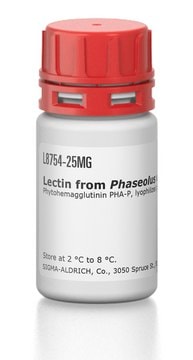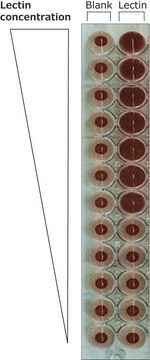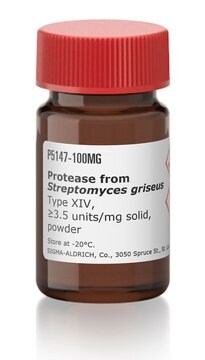M5280
Mastoparan, Vespula lewisii
≥97% (HPLC), powder
About This Item
Productos recomendados
biological source
synthetic
Quality Level
assay
≥97% (HPLC)
form
powder
color
white
storage temp.
−20°C
SMILES string
CC[C@H](C)[C@H](N)C(=O)N[C@@H](CC(N)=O)C(=O)N[C@@H](CC(C)C)C(=O)N[C@@H](CCCCN)C(=O)N[C@@H](C)C(=O)N[C@@H](CC(C)C)C(=O)N[C@@H](C)C(=O)N[C@@H](C)C(=O)N[C@@H](CC(C)C)C(=O)N[C@@H](C)C(=O)N[C@@H](CCCCN)C(=O)N[C@@H](CCCCN)C(=O)NC([C@@H](C)CC)C(=O)N[C@@H](CC(C)C)C(N)=O
InChI
1S/C70H131N19O15/c1-17-40(11)55(75)69(103)88-53(35-54(74)90)68(102)87-52(34-39(9)10)67(101)83-46(25-19-22-28-71)62(96)78-45(16)61(95)86-50(32-37(5)6)65(99)79-42(13)58(92)77-43(14)60(94)85-51(33-38(7)8)66(100)80-44(15)59(93)81-47(26-20-23-29-72)63(97)82-48(27-21-24-30-73)64(98)89-56(41(12)18-2)70(104)84-49(57(76)91)31-36(3)4/h36-53,55-56H,17-35,71-73,75H2,1-16H3,(H2,74,90)(H2,76,91)(H,77,92)(H,78,96)(H,79,99)(H,80,100)(H,81,93)(H,82,97)(H,83,101)(H,84,104)(H,85,94)(H,86,95)(H,87,102)(H,88,103)(H,89,98)/t40-,41-,42-,43-,44-,45-,46-,47-,48-,49-,50-,51-,52-,53-,55-,56-/m0/s1
InChI key
MASXKPLGZRMBJF-MVSGICTGSA-N
Gene Information
human ... CALM1(801) , PLA2R1(22925)
mouse ... CALM1(12313) , PLA2R1(18779)
rat ... CALM1(24242) , PLA2R1(295631)
¿Está buscando productos similares? Visita Guía de comparación de productos
Amino Acid Sequence
General description
Application
Biochem/physiol Actions
Other Notes
Storage Class
11 - Combustible Solids
wgk_germany
WGK 3
flash_point_f
Not applicable
flash_point_c
Not applicable
ppe
Eyeshields, Gloves, type N95 (US)
Elija entre una de las versiones más recientes:
¿Ya tiene este producto?
Encuentre la documentación para los productos que ha comprado recientemente en la Biblioteca de documentos.
Nuestro equipo de científicos tiene experiencia en todas las áreas de investigación: Ciencias de la vida, Ciencia de los materiales, Síntesis química, Cromatografía, Analítica y muchas otras.
Póngase en contacto con el Servicio técnico






